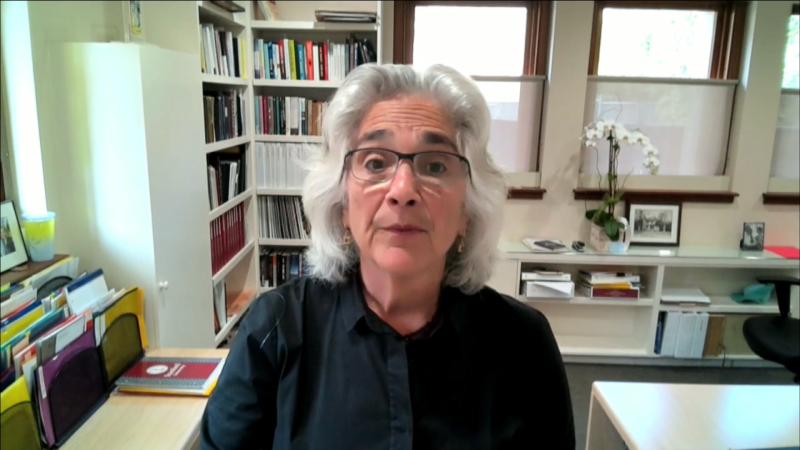The University plans to temporarily keep some classes virtual and eventually make classrooms controlled by departments more centrally available to address the current classroom shortage, said Provost Persis Drell during Wednesday’s installment of Campus Conversations with the Provost and Stanford President Marc Tessier-Lavigne.
The University is down approximately 12% of available classrooms despite an increase of about 400 undergraduate students this year, according to Drell. The limited space is a result of renovations occurring in the Gates Computer Science building and the planned renovations for the Graduate School of Education building. Additionally, some classrooms are unusable because their ventilation did not meet the University’s standards for COVID safety, Drell added.
“We do have a shortage of classrooms. In the nearer term, we made a decision to have some classes online to deal with that,” Drell said. “In the near term, it is going to be tight as this big group of undergraduates goes through the system.”
The Gates Computer Science building is expected to be back in operations by the winter quarter, which should help alleviate the shortage. In the long term, the University plans to increase classroom inventory and make classrooms that are currently locally controlled by departments more centrally available, according to Drell.
Tessier-Lavigne later spoke about preparations for the fall 2022 launch of Stanford’s new school focused on climate and sustainability. Tessier-Lavigne described climate change as “perhaps the defining issue of the 21st century,” and said that the University wants to “put Stanford’s resources to work to help ensure the sustainability of our planet and human life.”
Drell added that the administration has been pleased with the initial rollout of the new residential living system, ResX, despite the difficulties posed by an unusually large freshman class and the pandemic.
“I want to give a special shoutout to the residential staff, who have worked so hard to manage what is actually a major transition,” Drell said. “Although we are very pleased with the initial rollout of ResX, it’s always important to remember that we are doing this in the context of a pandemic that’s made it much more difficult.”
Both Drell and Tessier-Lavigne expressed their commitment to promoting a strong sense of community after 18 months of remote learning. Tessier-Lavigne highlighted his top priorities for the school year, most of which centered around community building. Among these, he hopes to renew and rebuild a strong and inclusive community and revitalize physical locations to be used as community hubs.
“It was just inspiring to see how our community came together to support one another to make our way through the pandemic,” Tessier-Lavigne said. “The fact that we can come together to tackle big problems is something that I hope we’ll build on.”
